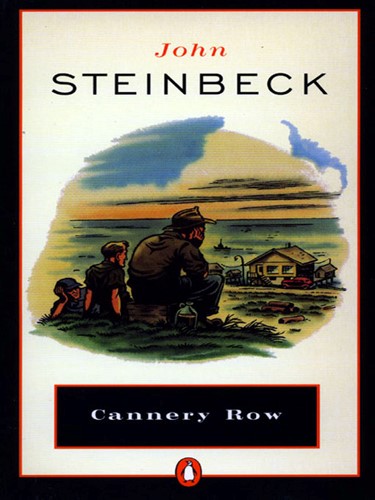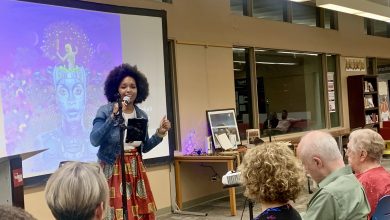Evans Library Favorite Banned Books: Cannery Row
by Suzanne Kozaitis

Cannery Row, by John Steinbeck
Cannery Row by John Steinbeck is “a poem, a stink, a grating noise, a quality of light, a tone, a habit, a nostalgia, a dream.” Set around the end of the Great Depression in a part of Monterrey, California that was home to a thriving sardine canning industry, the story idealizes the common citizens of Cannery Row including Lee Chong, the general store owner; Dora Flood, proprietor of the brothel called Bear Flag Restaurant; “Mac and the boys,” a group of local bums; and Doc, a marine biologist based on Steinbeck’s real-life friend, Ed Ricketts, who “would listen to any kind of nonsense and turn it into wisdom.” The characters exist in a utopia where good fellowship and a good heart are all you need to succeed, but intertwined throughout the story are dark vignettes to remind us of the nagging presence of misfortune and sorrow.
Like many of Steinbeck’s books written about “local color,” this one was challenged over the years for language and themes considered offensive or inappropriate for young readers. The irony is that Steinbeck’s often-challenged books are among those studied most often in schools. I first read Cannery Row in grade school, and what I took away at the time was a strong sense of the place and colorful characters — a funny, sad, and poignant slice of life where not much seemed to happen. Many years later, while visiting Cannery Row in person, I re-read the book. Seasoned by life’s experiences and surrounded by the living Pacific Ocean, I was then better able to grasp the complex themes of the story playing out like the ripples in a tide pool at twilight where each character is treated as a specimen from the sea of humanity.
Next on the reading list is the Steinbeck sequel called Sweet Thursday.





